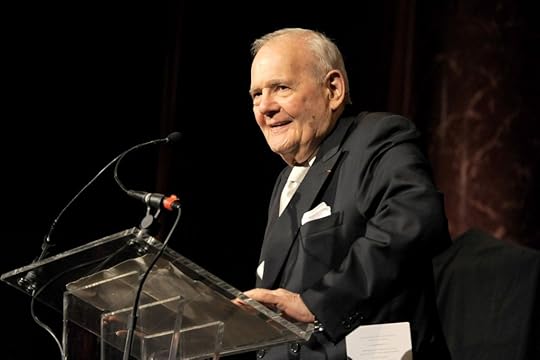The Paris Review's Blog, page 919
May 7, 2012
8, rue Garancière
On April 3, Robert Silvers accepted the Paris Review’s Hadada Prize for a strong and unique contribution to literature. These were his remarks.
When something like this evening happens, you ask how you got here, and I thought back to the autumn of 1954, when I was a soldier at NATO military headquarters—called SHAPE—near Paris. One of the best things about working there was that, by some international understanding, practically everyone had Wednesday afternoon off—you could go to the Louvre, you could go to the Café de Flore. And there, one Wednesday afternoon, at the kiosk in front of the Flore, I bought a copy of The Paris Review and took it back to our international barracks at Rocquencourt and read it in my bunk. I thought I should know more about it.
Read More »Literary Communes, Literary Parodies: Happy Monday!

February House, a musical about the famed Brooklyn Heights brownstone that housed Truman Capote, W. H. Auden, Gypsy Rose Lee (left), Carson McCullers, and Benjamin Britten, is being created based on Sherrill Tippins’s 2005 book of the same name.
Were4 rt thou Rmo? The Bard in text form.
A guide to philosophy in literature.
Paulo Coelho will be selling his e-books for less than a dollar.
A Florida library has officially banned Fifty Shades of Grey.
Meanwhile, Fifty Shames of Earl Grey will be coming to a bookstore near you.
May 4, 2012
Tim Parks, Milan, Italy
A series on what writers from around the world see from their windows.
Do I pull up the shutter before my cappuccino or afterwards? That’s the first decision of each new day. I need to see if it’s raining. The cord is worn and the shutter’s slats will jam if yanked too hard. The view scrolls up. ‘View’ is generous. This is an ordinary courtyard in a sixties condo in working-class Milan; my small balcony hangs over the building’s main entrance, looking onto other small balconies above and to the left, some alive with plants, with dogs, cats, canaries, others storing old bikes, buggies, bits of furniture. In the middle of the space, a handkerchief of lawn and a tall hoarse chestnut, golden in midsummer, gaunt in winter, remind us of Nature. Otherwise it’s all cement, stucco and tiling. Not unpleasant, not oppressive, not exciting. After ten minutes in the café (across the street) where recent Chinese arrivals serve excellent coffee and croissants, I work with my back to the open window which lets in dogs barking, a young man I-phoning on his balcony, some challenged creature who yells sporadically down the street. The portinaia sweeps fallen leaves and cigarette stubs, chatting to all comers with unremitting enthusiasm. But I’m wearing earplugs, her voice is muffled. About 10.30 the sun hunts me down and a bright boil of light finds out how long it is since I vacuumed the parquet. Too long. I frown and turn up the brightness on this other window I’m typing into.
—Tim Parks
Job Aspirations; Forgiveness
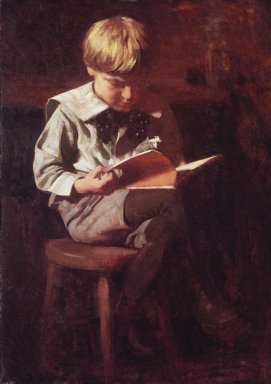 I am a student interested in working for The Paris Review one day. What steps would you recommend to get there?
I am a student interested in working for The Paris Review one day. What steps would you recommend to get there?
Read lots. That’s the main thing. And not just the books they assign you in class. The Daily gives you a pretty good idea of what books and articles we’re reading; at very least you'll have something to talk about in the interview. (You should read The Paris Review. Maybe this goes without saying.)
Learn to write. I don’t mean “creative” writing, I mean short-form journalism. If your school has a good student newspaper, sign up. Or start sending pitches to your favorite magazines. The main thing is to write for an editor who can help you improve—tightening sentences, taking yourself out of the picture when you don’t belong, that kind of thing. Being able to write short, competent reports is a surprisingly useful skill—and one that we value here.
Bump one of us off. The Review has only six full-time employees, so job openings are rare. But we do accept new (unpaid) interns every season: click here for more information on how to apply.
We’re honored by your interest!
I’m working on a character who is trying to figure out secrets in his family and still hold it intact... I've been reading Albert Camus’ “The Fall,” and loving it, but wondered if you might have any other suggestions for literature dealing with themes of forgiveness to help out with some inspiration?
Much Obliged.
Dear Obliged,
The first title that pops into my head is Anthony Trollope’s Can You Forgive Her? Then I hear Henry James: “Yes, and forget her, too.” James wrote lots of novels about forgiveness. The Wings of the Dove, which I have never made it through, The Ambassadors, The Portrait of a Lady, and The Altar of the Dead all turn on acts of forgiveness. If your subject is forgiveness in marriage, you may be inspired by Norman Rush’s Mortals or Marilynne Robinson’s Gilead or Jane Smiley’s The Age of Grief. Then there are Jonathan Franzen’s last two novels, Freedom and The Corrections. Forgiveness is a big subject in Franzen's work, though critics don't often point it out. The Corrections is less about marital forgiveness, more about how hard it can be to forgive one's parents and kids. Elena Ferrante's Days of Abandonment has to do with forgiveness in divorce. D. H. Lawrence's Sons and Lovers has to do with forgiveness between mothers and sons; Geoff Dyer's Out of Sheer Rage has to do with forgiveness between Geoff and D.H. Lawrence ... For some reason everywhere I turn today, I see people asking to be forgiven and trying to forgive. Maybe you can’t go wrong.
Have a question for the editors of The Paris Review? E-mail us.
A Labor of Love, Resurrected
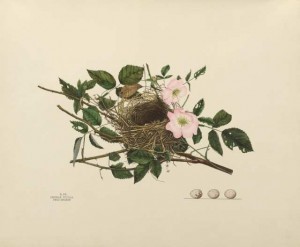 Here is a lovely story: a book finding a well-deserved audience 125 years after the author self-published it. The book is Illustrations of the Nests and Eggs of Birds of Ohio, and the author a twenty-nine-year-old naturalist and illustrator named Genevieve Jones. To quote the Princeton Architectural Press,
Here is a lovely story: a book finding a well-deserved audience 125 years after the author self-published it. The book is Illustrations of the Nests and Eggs of Birds of Ohio, and the author a twenty-nine-year-old naturalist and illustrator named Genevieve Jones. To quote the Princeton Architectural Press,
Inspired by viewing Audubon’s lithographs at the 1876 World’s Fair in Philadelphia … Genevieve Jones began working on a companion volume to The Birds of America, illustrating the nests and eggs that Audubon omitted. Her brother collected the nests and eggs, her father paid for the publishing, and Genevieve learned lithography and began illustrating the specimens. When Genevieve died suddenly of typhoid fever, her family labored for seven years to finish the project in her memory. The original book, sold by subscription in twenty-three parts, included Presidents Rutherford B. Hayes and Theodore Roosevelt among its subscribers. Only ninety copies of the original book were published in 1886, and fewer than twenty-five copies now remain in institutions and private hands.
In PAP’s The Other Audubon, author Joy Kiser reproduces all sixty-eight of Jones’s color lithographs, as well original text, photographs, field notes, and a key to eggs and birds. It’s a boon for those with an interest in natural history or ornithology, of course, but we are as engaged by the personal story as the beauty of the book itself. An enduring memento indeed.
What We’re Loving: Sake Bars, Met Balls, and Rhubarb
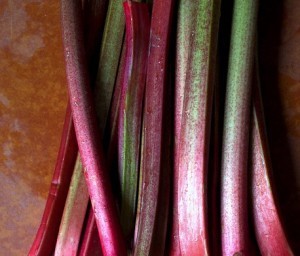 I’m hooked on The Briefcase, by Hiromi Kawakami, a sentimental novel about the friendship, formed over late nights at a sake bar, between a Tokyo woman in her late thirties and her old high school teacher. It’s interesting enough to read about an aging woman drawn to an older man; when this attraction comes wrapped up in Japanese nostalgia for old fashioned inns, mushroom hunting, refined manners, and Basho, how can a person resist? I can only imagine what wizardry must have gone into Allison Markin Powell’s translation. —Lorin Stein
I’m hooked on The Briefcase, by Hiromi Kawakami, a sentimental novel about the friendship, formed over late nights at a sake bar, between a Tokyo woman in her late thirties and her old high school teacher. It’s interesting enough to read about an aging woman drawn to an older man; when this attraction comes wrapped up in Japanese nostalgia for old fashioned inns, mushroom hunting, refined manners, and Basho, how can a person resist? I can only imagine what wizardry must have gone into Allison Markin Powell’s translation. —Lorin Stein
There are so many intriguing events associated with the PEN World Voices Festival this week. One I’ll be catching for sure is this little-seen documentary on Diane Arbus, actually a taping of the photographer discussing a slide show of her work in 1970. The viewing will be followed by readings from Diane Arbus: A Chronology by Francine Prose, Michael Cunningham, and Arbus’s daughter, Doon. —Sadie Stein
The PULSE Contemporary Art Fair is here! Today through Sunday at the Metropolitan Pavilion, galleries from around the world are exhibiting the best of contemporary art. Whether your interest and pockets are shallow or deep, you could easily be held captive for hours, lost in the endless spectacles and hidden nooks. It’s an adventure, so may I suggest comfortable shoes? —Elizabeth Nelson
Two years ago I started reading (and devouring) the Smitten Kitchen blog. I have since made more than thirty of her recipes and have been waiting for her forthcoming first cookbook. This week she posted a sneak peek, so time to start some seasonal cooking—especially as farmer’s markets everywhere have the first spring produce, like asparagus and rhubarb! —Emily Cole-Kelly
Most people will eat fifteen hundred PB&Js before graduating high school. I’ve easily consumed twice that since then. I love peanut butter. I love the taste of it mixed with a good jam. Statistics about the sandwich are always fascinating: women prefer creamy and men crunchy (I only eat crunchy); the vast majority of people put the peanut butter on first (I do, too, but it just makes sense, right?). Leave it to Ruth Reichl to make a great thing even better. Who knew that a little salt and heat could improve upon perfection. —Nicole Rudick
My invitation to the Met’s Costume Institute Ball seems to have been mysteriously lost in the mail, but reading through the gorgeous companion volume to the Schiaparelli and Prada exhibition is (I’m sure) every bit as interesting, and nearly as glamorous. —S.S.
Moon Madness
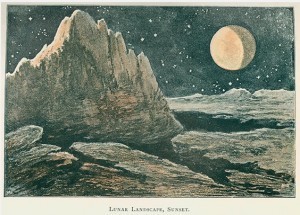 As Shakespeare said, “It is the very error of the moon … she comes more nearer earth than she wont, and makes men mad.” This weekend will see the biggest full moon of the year. The “supermoon" will be at its most visible Saturday night, and we are already scouting our vantage points!
As Shakespeare said, “It is the very error of the moon … she comes more nearer earth than she wont, and makes men mad.” This weekend will see the biggest full moon of the year. The “supermoon" will be at its most visible Saturday night, and we are already scouting our vantage points!
It seems fitting that we should mark the event with a visit to the newly available online picture archive of the venerable Royal Society of London for Improving Natural Knowledge. Founded in 1660, the Royal Society is the world’s oldest scientific library. It’s easy to lose yourself on the site for a few hours—and you should: whether your tastes run to seventeenth-century botanical studies, early lunar photography, or the history of telescopy, you’ll be rewarded by a collection that, a week ago, might have required a plane ticket.
And since 2012 also marks the 110th birthday of the classic silent short A Trip to the Moon, it is meet and right that we pay tribute to Georges Méliès as well! Happy viewing, wherever you are.
Bacon, Sci-Fi, and Feuds

The literary feud hall of fame!
Ploughshares launches the fascinating First Drafts, in which writers discuss their revision process.
Novelist Jane Rogers wins the UK’s science-fiction prize, the Arthur C. Clarke Award, for The Testament of Jessie Lamb.
The future of the e-reader?
Neil Gaiman’s reading and listening list.
New York’s children’s bookstore Books of Wonder plays host to a bacon bakery.
May 3, 2012
Dear Sally Draper, Maybe Wait a Few Years to Read This
You know what’s weird? You could be my mother.
I mean, you’re not, obviously. My mom’s a ginger and Jewish, and her sixties childhood was really quite different from yours, what with her not having Don Draper as a dad or Betty as a mom, and her not seeing her step-grandmother go down on Roger Sterling in the back room at an American Cancer Society Benefit.
So yeah, sucks to be you.
But what if things had gone differently? What if my mom had stayed with that painter who looked like Charles Manson and once punched my grandfather in the face, and my dad had met you instead among the bohemians inhabiting seventies Jerusalem, drinking wine on Old City balconies, discussing poetry and politics, and inhaling the sweetly mingling odors of bellflower and frying falafel?
PEN Presents: “Reviewing Translations”
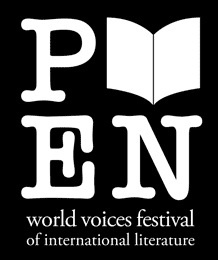
Here at The Paris Review, the art of translation is a subject near and dear to our hearts. Tonight, join
Haykanush Avetisyan, Ruth Franklin, Julya Rabinowich, and our very own Lorin Stein as they discuss the tricky business of reviewing translations. To quote the PEN World Voices site,When a translated work is reviewed, what exactly is being critiqued? Is it the work itself or the quality of its translation? How does reviewing a translation differ from reviewing a work in its original language? Should critics be bilingual? Should they be experts in the literature and history of foreign cultures?
Cosponsored by the Austrian Cultural Forum, Ledig House, the PEN Translation Committee, the National Book Critics Circle, and the School of Writing at the New School. For details, see the PEN Web site.
The Paris Review's Blog
- The Paris Review's profile
- 305 followers


